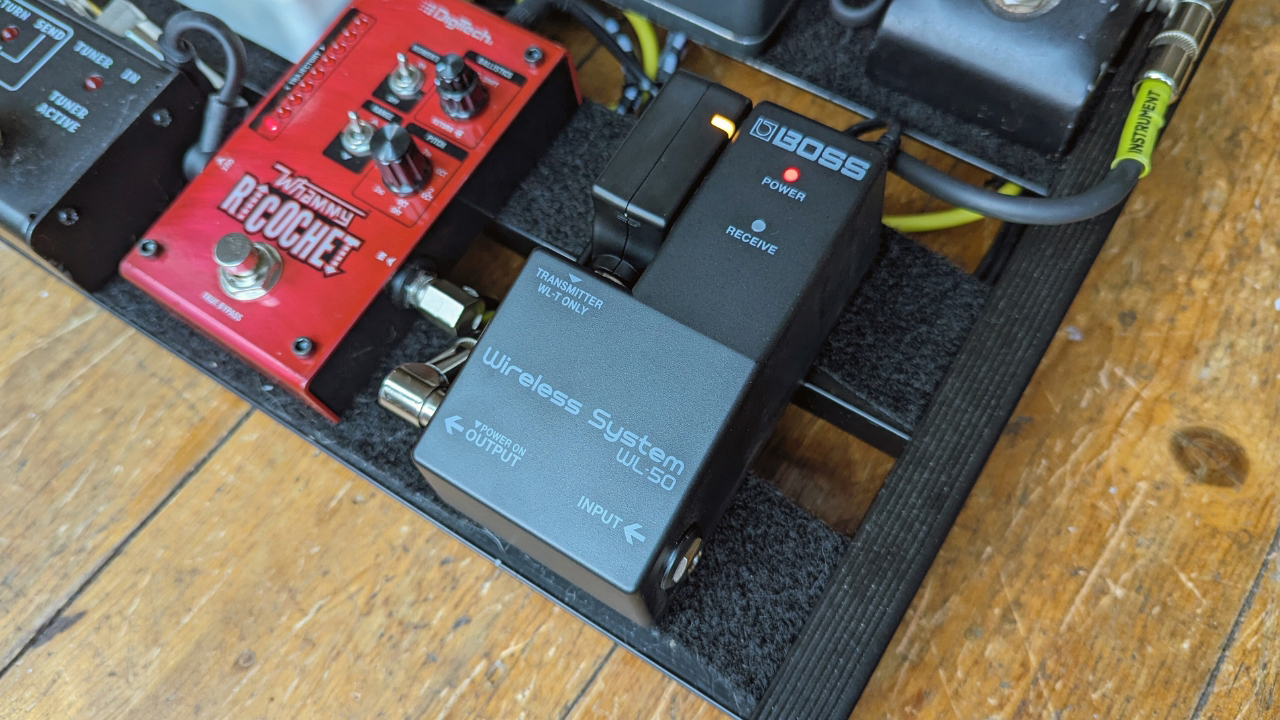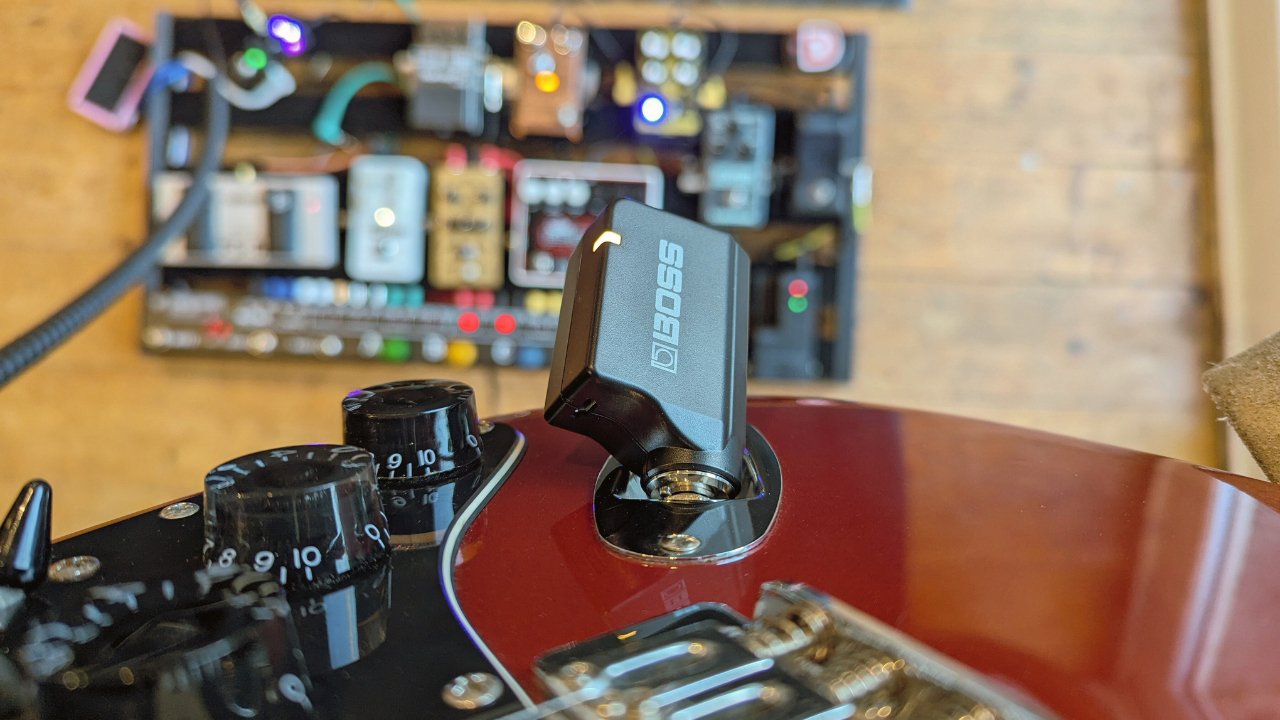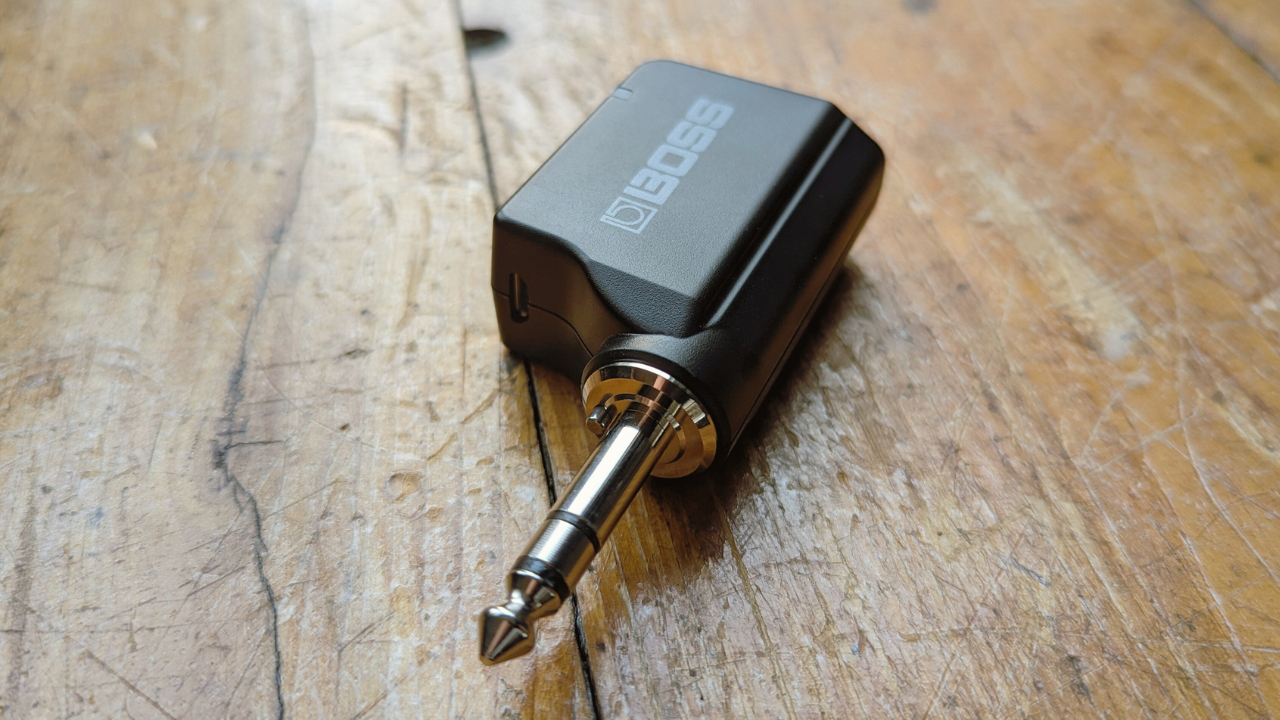
Guitar wireless systems are freeing, but they also come with a sense of anxiety. Will I pick up interference on stage? Is my transmitter going to die minutes before I go on stage or even worse, mid-way through the set? The truth is over shorter distances 2.4GHz wireless systems are incredibly reliable and the chances of you picking up the venue WiFi over those distances are highly unlikely.
If you’re thinking about freeing yourself from the grasp of your guitar cable, then you’ll have considered getting yourself a wireless system. There’s a lot of choice on offer nowadays and many systems are well within the grasp of the average guitar player, with one such reasonably priced option being today’s subject, the Boss WL-50.
Designed to be placed on your pedalboard, this offering from Boss looks to compete with similar options from Line 6, Shure, and Sennheiser. Coming in cheaper than all of its main competitors gives it an advantage, but does the performance match? Let's find out…
Boss WL-50 review: Features

The Boss WL-50 comprises two main components, transmitter and receiver. The receiver is around the size of a regular Boss-sized stompbox and features a 1/4-inch input and output jacks. Why an input? It allows you to plug a guitar in via cable that will override the transmitter – handy in an emergency.
9V power-in and power-out sockets provide your juice and you can also run the receiver with two AA batteries if you wish. A ‘cable tone’ switch simulates different cable lengths and the two lights on the receiver let you know whether it's receiving a signal and whether it's powered on.

The transmitter meanwhile comes in a lightweight, ‘bug’ style plastic casing promising easy connectivity and the ability to fit into any guitar’s output jack. Gaining its charge whilst sitting in the receiver, it also features a USB Micro B port in case you need to charge it away from the receiver.
It has a colored light on it that determines several states. Whilst in the receiver, flashing orange indicates finding the optimum wireless connection, stable orange is charging, blinking green is fully charged, and stable green happens after five hours when charging automatically stops to protect the battery. Out of the housing stable green implies a healthy charge, orange indicates two hours of battery life, while red means thirty minutes of charge left.
Boss WL-50 review: Usability

Getting the WL-50 ready to rock was quite literally a matter of a minute. Placing the transmitter on my pedalboard and plugging the output into my guitar tuner pedal, I simply switched on the unit by plugging it in and I was ready to go immediately. Despite both components being made of plastic they feel ultra-rugged, as you'd expect with Boss' legendary reputation for durability. This also makes them nice and lightweight which is welcome alongside a heavy 'board full of pedals.
I tried the transmitter in several of my guitars including a Telecaster, Stratocaster, Les Paul, and a PRS, finding no issues whatsoever with compatibility. It’s super lightweight which is quite a freeing feeling as you’re much more easily able to move about without the feel of a cable, whether you’re playing sitting or standing up. I’ll admit though it looks a bit ugly sticking out of my Strat.

Having an extra power out on the receiver is a godsend for pedalboard users, essentially saving you from wasting one of your power outs charging your wireless unit. There’s no documentation on how many mA it delivers but I used both my Carcosa fuzz and Victory Sheriff overdrive with no issues. Presumably, there’s a limit on what it can power but as I don’t use many intensive digital effects I didn’t find it.
Boss WL-50 review: Performance

As I was reviewing various bits of gear I was able to play with the transmitter on consistently for well over three hours, with the light remaining green. It was only once I had played for a few more hours the next day that its light changed to orange, so no worries about it not lasting the course of a show or even a long rehearsal. The fact that it's charging every time you place it back into the receiver is reassuring too.
I could also tell no difference between the tone of my guitar with the Boss WL-50 and with a regular guitar cable. I A/B’d them with the same settings to see if there was anything discernably different but to my ears, the tone sounded exactly the same. I didn’t find there was any noticeable loss of treble bite with my Klon clone engaged and my octave pedal sounded just as beefy as it always does.
The cable tone switch is a nice extra touch although to be totally honest, I couldn’t tell much of a difference in switching between the three options. One is no cable length, one short, and one long. My ears seemed to prefer the ‘short’ option when I tested all three back to back, although I couldn’t really tell you why other than gut instinct.
Boss WL-50 review: Verdict

Having tested several wireless systems I can safely say that the Boss WL-50 is one of the best out there. If you’re a pedalboard user it's a fantastic option and coming in cheaper than similar offerings from Line 6, Shure, and Sennheiser makes it a tempting choice.
I've oft-debated whether or not to go completely wireless for shows and the WL-50 makes a compelling argument for me. There’s plenty of great functionality to make your life easier and assuage any fears of signal or battery loss, and the sound is simply fantastic.
Boss WL-50 review: Specs
- Price: $229 / £178 / €209
- Range: 65 feet line-of-sight
- Latency: 2.3ms
- Frequency response: 20Hz - 20kHz
- Dynamic range: >110dB
- Operating band: 2.4GHz
- Transmitter battery life: 12 hours
- Transmitter battery type: Lithium-ion rechargeable
- Receiver inputs: 1 x 1/4" (line), 1 x 1/4" (transmitter)
- Receiver outputs: 1 x 1/4"
- Contact: Boss







